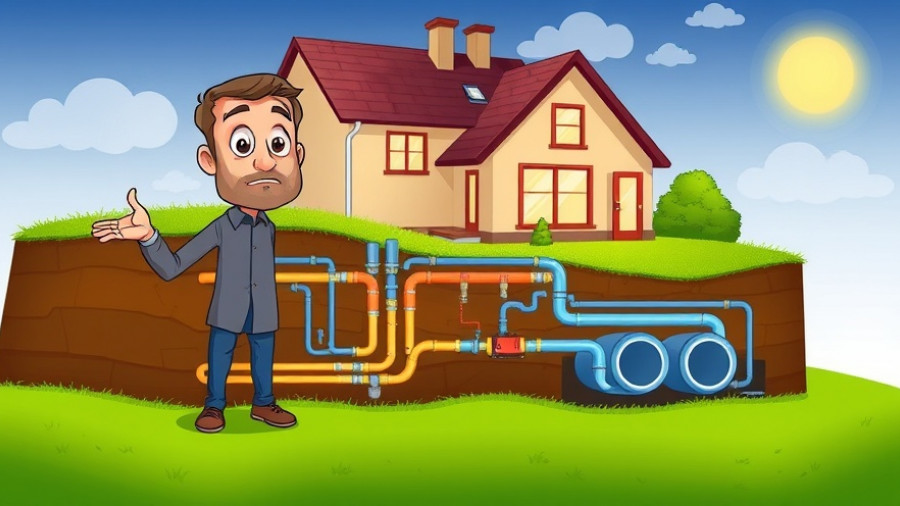
Understanding Solid-State Batteries: An Evolving Narrative
If you’ve been following the journey of battery technology, you’re probably familiar with the buzz surrounding solid-state batteries (SSBs). Promised by automotive giants like Toyota and Samsung, the arrival of these revolutionary batteries has long been anticipated. However, skepticism looms as electric vehicles continue to rely on tried-and-true lithium-ion technology. Some at the forefront claim that 2025 and 2026 signal a turning point, with actual advancements being made—factories opening and prototypes being tested—but does this signify that solid-state batteries are finally within our grasp?
In 'Solid-State Batteries: Hype vs. Reality', the discussion dives into the technological advancements and challenges of solid-state batteries, exploring key insights that sparked deeper analysis on our end.
A Mixed Bag of Promises and Progress
The landscape of solid-state batteries isn’t as straightforward as it might seem. Many companies have been at the helm, branding their batteries under the SSB umbrella to create excitement. However, most of these innovations come with caveats. As reported, the term “solid-state battery” can denote everything from all-solid-state systems (ASSBs) to semi-solid-state batteries (semi-SSBs) with a trace of liquid electrolyte. With varying definitions, the customer benefits can get muddled in marketing hype.
The reality is that as of now, there are some promising advancements. For instance, Mercedes-Benz recently showcased an impressive feat by achieving 749 miles on a single charge using their solid-state technology provided by Factorial Energy. Other manufacturers are finding themselves on the cusp of launching vehicles equipped with semi-solid batteries, like the MG4 from SAIC Motor, which offers an attractive price point under $15,000.
Commercial Viability: Road Ahead
While these developments are commendable, experts remain cautious. Dr. James Edmondson from IDTechEX expressed skepticism regarding full commercialization, with expectations pushing solid-state batteries into the 2030s for mass adoption. By 2035, it’s projected that solid-state batteries will only contribute to a small fraction—about 100 GWh—of the enormous 3,800 GWh forecasted for the overall electric vehicle market. This raises a critical question: How much longer can consumers tolerate the hype without seeing tangible results?
What’s Hidden Behind the Hype?
Let’s take a closer look at the manufacturing challenges that threaten to keep solid-state batteries from hitting the mainstream market. For starters, the technology is sensitive to temperature variations affecting performance. Many solid electrolytes can only operate optimally at elevated temperatures or suffer in humid climates, creating hurdles in real-world applications. Furthermore, the presence of dendrites—crystal structures that can form and cause short circuits—remains a major concern for solid-state batteries.
Moreover, the manufacturing process of solid-state batteries differs significantly from traditional lithium-ion production. While an established framework exists for lithium-ion, solid-state technology is a new frontier, facing hurdles that may delay large-scale production. Different solutions are being tried—sulfide-based batteries here, polymer solutions there—but with each approach comes its own manufacturing complexities.
Practical Insights for Eco-Conscious Consumers
As someone interested in sustainable living and technology, keeping an eye on solid-state battery developments is crucial. While the market transitions slowly, consumers can play an active role in our journey towards cleaner energy use. Understanding these emerging technologies allows you to make informed decisions about electric vehicles or energy-efficient home systems that may incorporate these advanced batteries.
This last point hits home especially for the environmentally conscious community: the future of energy storage matters. If solid-state batteries can deliver on their promises—enhanced safety, reduced charging time, and greater energy density—they could indeed reshape the landscape of sustainable living.
Looking Ahead: Hope vs. Reality
As we look ahead to 2028 and beyond, it’s important to remain cautiously optimistic. Though the advancements in solid-state technology are promising, grounding our expectations in a reality tempered by uncertainty is necessary. We've seen remarkable technological feats in battery efficiency and safety, but the ideal “fully solid-state battery” may take longer to realize than many had hoped.
Yet, progress is being made. The launch of vehicles with semi-solid-state technology suggests that we're moving toward a future where the benefits of solid-state batteries may eventually trickle down, offering significant improvements in user experience. We remain hopeful as these designs emerge from the lab and into our everyday lives.
Join the Conversation on Future Innovations
Engagement with this topic is essential—whether you’re passionate about technology, sustainability, or both. Let's keep the dialogue going! What are your thoughts on the future of solid-state batteries? Do you believe they can live up to the hype, or do you share a similar skepticism?
Take the first step towards a greener living experience. If you haven't explored electric vehicle options yet, consider doing so sooner rather than later. They may be transitioning rapidly in ways that can enhance your sustainable lifestyle.
Stay curious about advancements in energy technology and how they can impact our lives; who knows what revolutionary changes the near future may hold!
 Add Row
Add Row  Add
Add 



Write A Comment